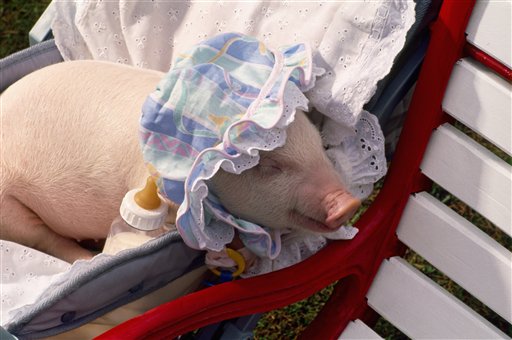The National Institutes of Health is spending over $200,000 to test sleep apnea treatments on obese miniature pigs.
The project, "Obstructive Sleep Apnea, an Obese Minipig Model," began this month and is being conducted by the University of Washington. The goal of the study is to test controversial methods for sleep apnea such as low-level electric shock treatment.
"Clinical data show that patients with obstructive sleep apnea or hypopnea (OSA) commonly have anatomic compromise of the [upper airway] UA due to either excessive tissue mass or neuromuscular compromise of the tongue base and/or soft palate," according to the grant for the project. "However, information about how shape and mobility of the tongue base and soft palate contribute to the [upper airway] collapse during sleep is very limited."
"Human study cannot address these critical questions underlying the pathogenesis and pathophysiology of [obstructive sleep apnea] because of the invasive technology necessary," the grant continued. "Thus, a suitable and reliable animal model is an imperative."
Obese mini pigs were chosen because they have "considerable similarity with humans."
"The obese minipig is especially appropriate because excess weight and obesity is the strongest risk factor for the development of [obstructive sleep apnea] and an independent predictor of [obstructive sleep apnea] in humans," the grant said.
The grant said treating pigs for sleep apnea would allow them to test "controversial therapies such as neuromuscular stimulation and pharmacological application under well-controlled experimental conditions." Functional Neuromuscular Stimulation involves low-level electrical currents to nerves that control muscles.
The researchers first must figure out if their test mini pigs actually have sleep apnea.
"We will first validate [obstructive sleep apnea] in obese minipigs, verify [obstructive sleep apnea] absence in controls, and identify the obstructive site(s) in [obstructive sleep apnea] to test the hypothesis that obese minipigs present spontaneous [obstructive sleep apnea] with [upper airway] collapse, and non-obese controls have no sign of [sleep apnea]," the grant said.
A research paper published in the National Library of Medicine in 1998 was based on the hypothesis that "three extremely obese Yucatan miniature pigs would have more sleep apnea than three nonobese Yucatan miniature pigs." The results concluded that the three extremely obese pigs did have trouble breathing in their sleep.
Once they have validated that the mini pigs have sleep apnea, the researchers will try to determine if too much slop is the cause.
"The proposed study will establish a reliable obstructive sleep apnea (OSA) animal model in obese minipigs with well-characterized upper airway morphology and function to meet an imperative need in sleep medicine," according to the grant’s public health statement. "The outcomes will provide completely critical and unique in vivo direct measurements and histological information about the roles of the tongue base and soft palate in respiration upper airway collapse during sleep, and will create a useful tool and solid body of knowledge for understanding the beneficial and adverse effects of various [sleep apnea] treatments, especially the invasive treatments that cannot be so thoroughly studied in humans."
The study has cost taxpayers $231,750 so far, and its budget will remain open until November 2016.
